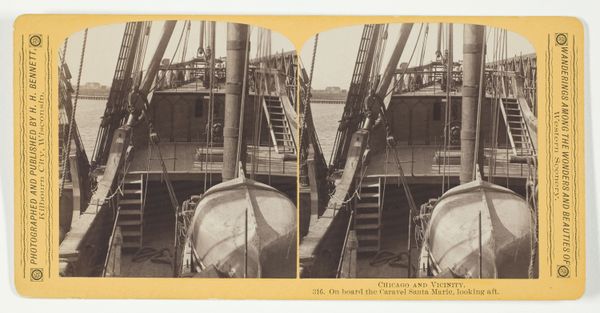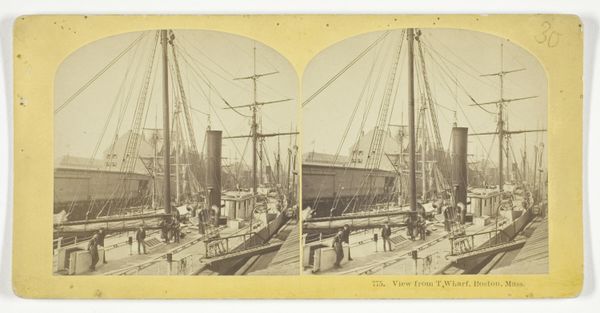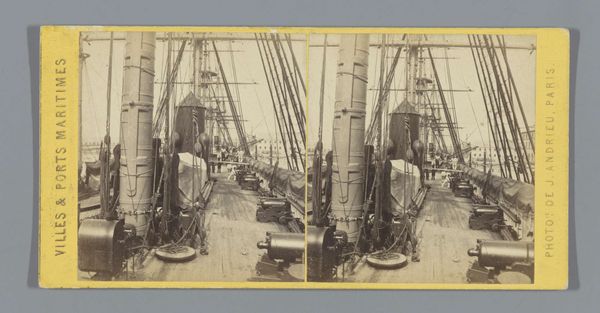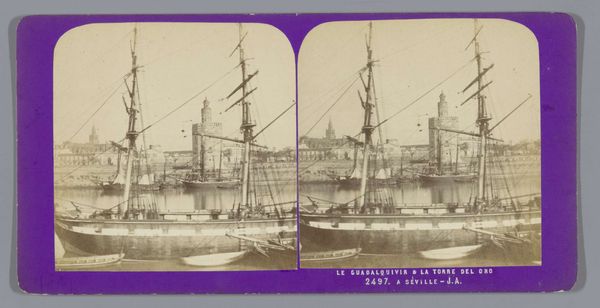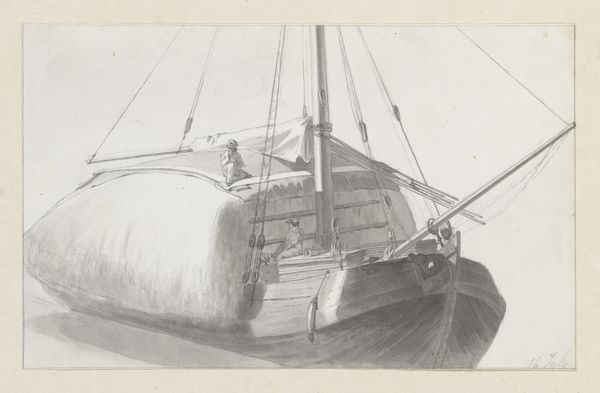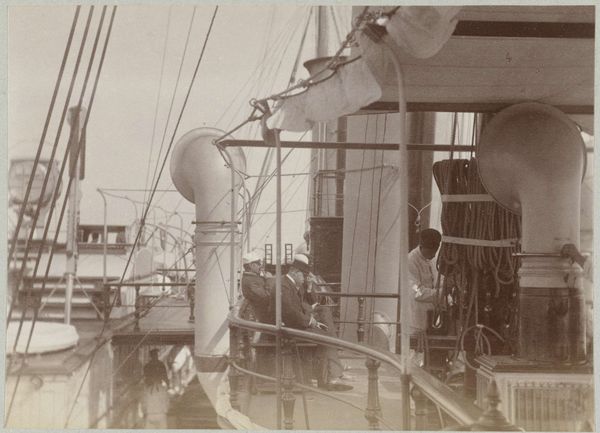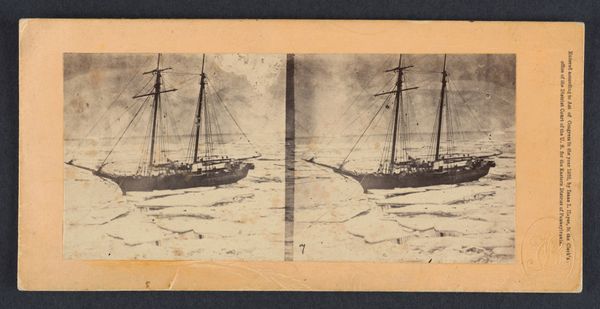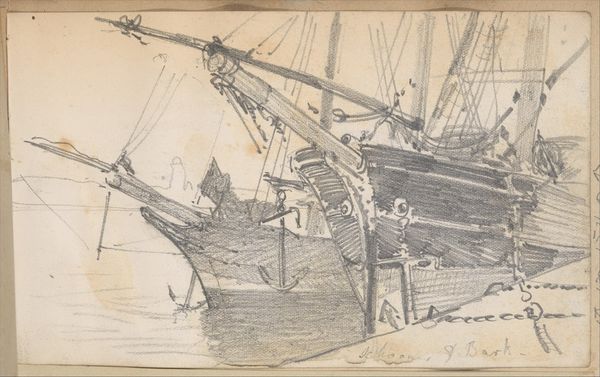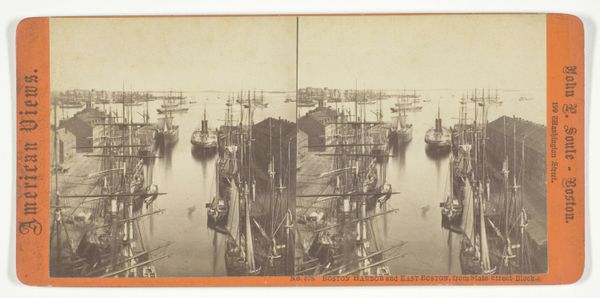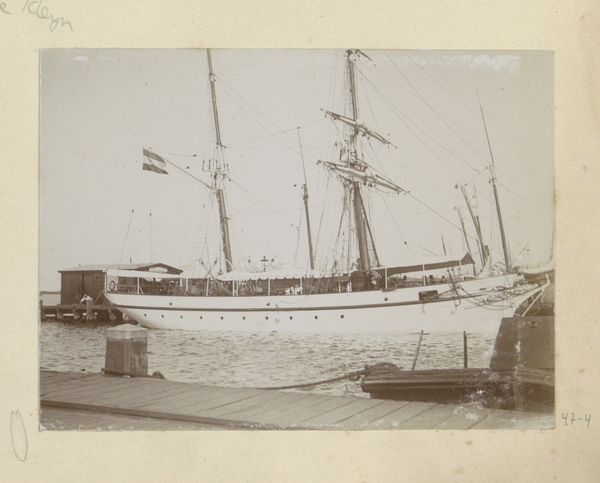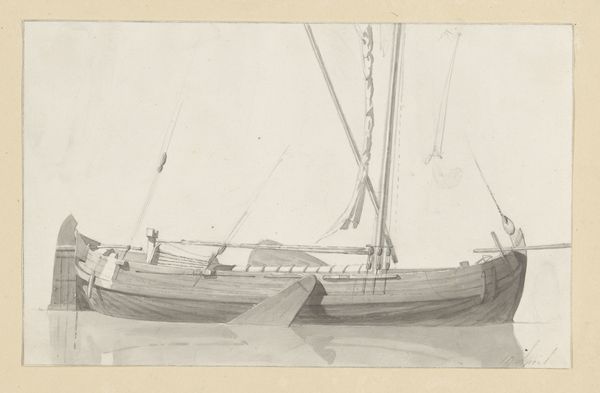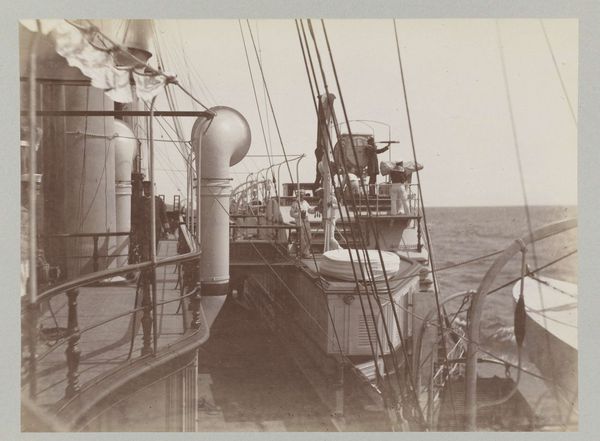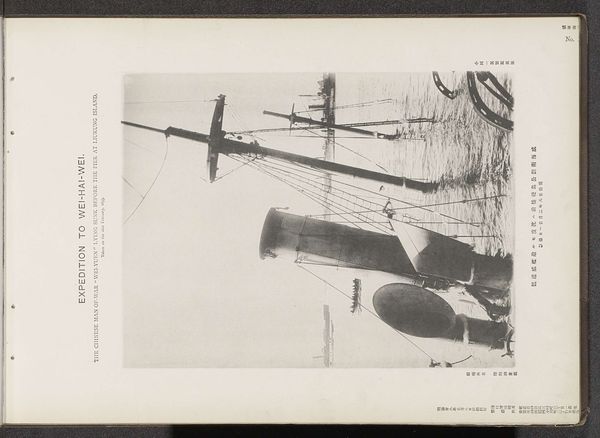
Under the Bow of the Caravel Santa Maria 1887 - 1893
0:00
0:00
print, photography
#
still-life-photography
#
16_19th-century
#
pictorialism
# print
#
photography
Dimensions: 7.9 × 7.4 cm (each image); 8.9 × 17.8 cm (card)
Copyright: Public Domain
Editor: Here we have Henry Hamilton Bennett’s “Under the Bow of the Caravel Santa Maria,” a photograph taken sometime between 1887 and 1893. It's fascinating how he's captured such a massive ship so close up. What strikes you when you look at it? Curator: What stands out for me is the context. This photograph, likely a stereograph intended for mass consumption, speaks volumes about the late 19th century’s fascination with historical narratives, especially the romanticized era of exploration. Editor: So, it’s less about the ship itself and more about what the ship represents at the time? Curator: Precisely. Bennett isn’t just documenting a vessel; he’s tapping into a broader cultural narrative. This ship, a replica, becomes a symbol, and its image, distributed widely, participates in constructing and reinforcing certain historical ideas. Consider also that these images were often sold as novelties – souvenirs even – so they contributed to the commodification of history and culture. Editor: That's interesting, it makes me think about who was consuming this imagery and what messages they were taking away from it. Do you think there’s also a political dimension to the choice of the *Santa Maria*? Curator: Absolutely. Think about the legacy of colonialism, the myths surrounding Columbus, and how they were being mobilized at the time. Images like this, disseminated across the country, helped shape a particular understanding—and often, a justification—of American expansion and its place in the world. How does understanding that potentially shift your perspective? Editor: I hadn’t really thought of it that way. I guess I saw it as just a nice photo of a ship. Now I'm thinking more critically about the power of images and the stories they can tell – or obscure. Curator: Exactly! It highlights how images, particularly those circulated widely, can actively participate in shaping cultural understanding and historical narratives.
Comments
No comments
Be the first to comment and join the conversation on the ultimate creative platform.
